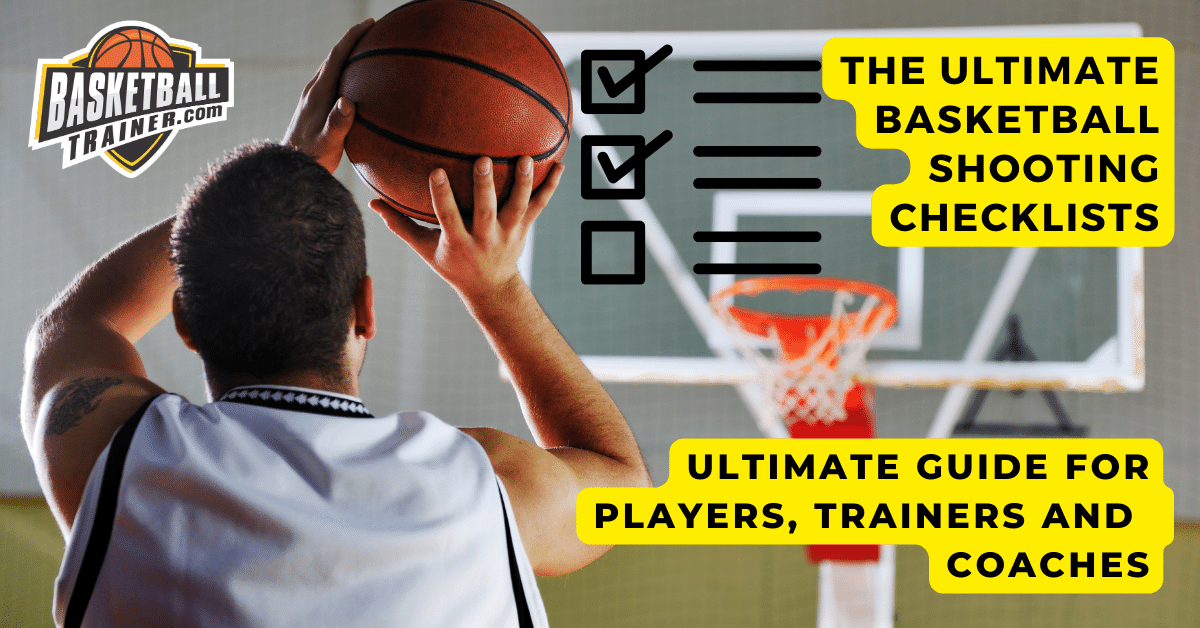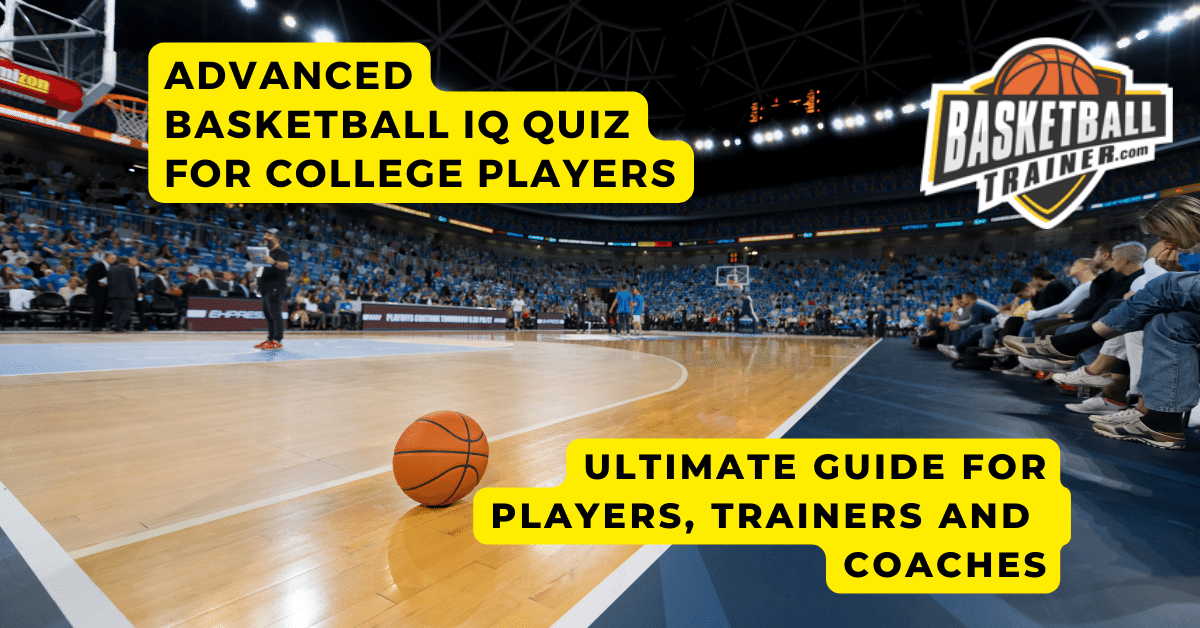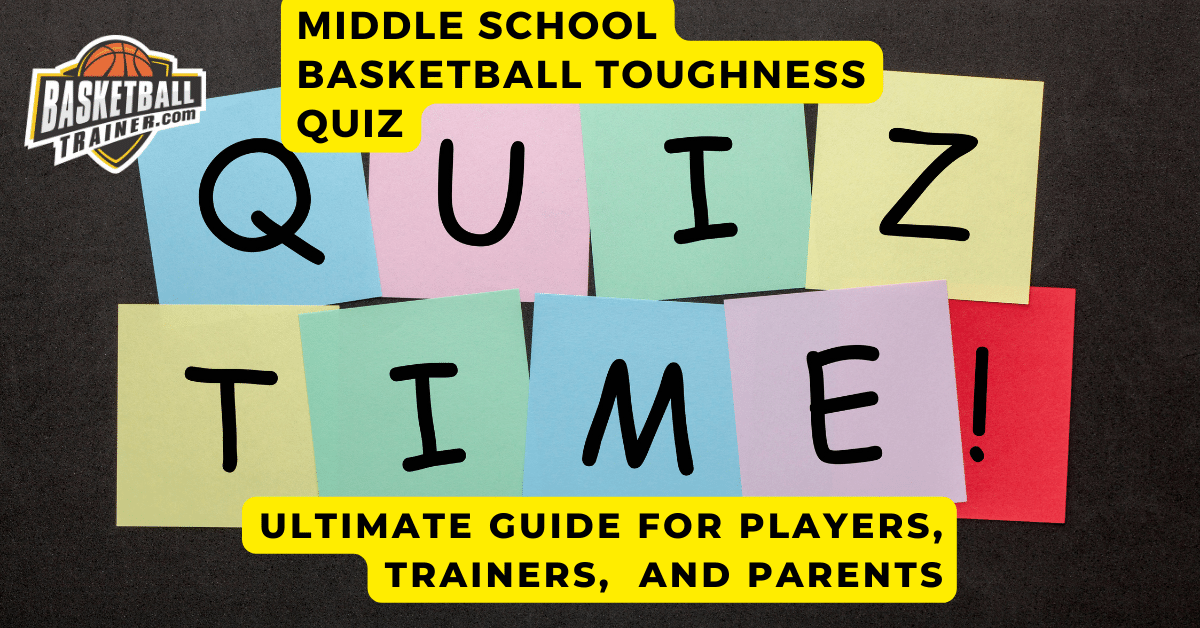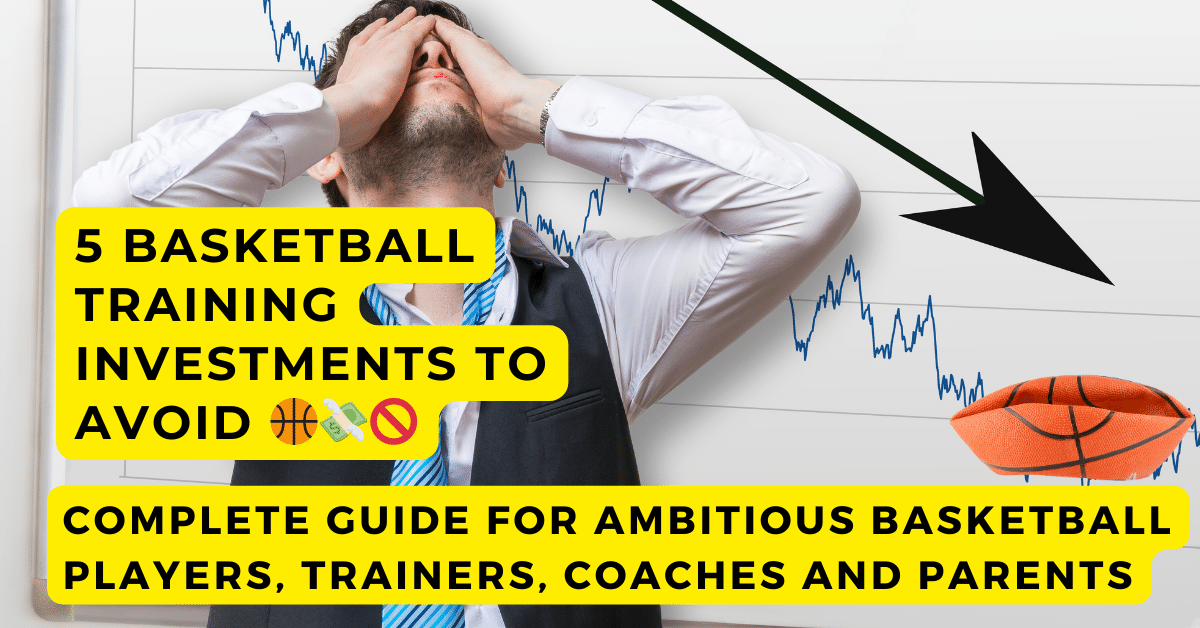Welcome to the world of basketball analytics, where numbers and stats converge to elevate your skills to new heights and The Basketball Analytics Player Guide helps you navigate that process 🚀 In this comprehensive guide, we’ll delve deep into the realm of individual skill assessment using basketball analytics. I’ll be your experienced guide, offering insights, expertise, and the authority to help you navigate this data-driven journey towards personal improvement on the hardwood. 🏆
Unveiling the Power of Basketball Analytics 📈
Basketball Analytics Defined
Let’s start by decoding what basketball analytics is all about. 🧐 Basketball analytics involves the collection, analysis, and interpretation of data to gain insights into player performance, team dynamics, and game strategies. 📊🏀 This isn’t just about crunching numbers; it’s about unlocking the hidden potential within you as a player. 🗝️
The Game-Changing Impact
Before diving into the nitty-gritty, let’s acknowledge how basketball analytics has transformed the game. 🔄 Traditionally, coaches and players relied on subjective observations and experience to make decisions. Now, with the advent of analytics, we have access to concrete data that reveals strengths, weaknesses, and areas for improvement. 🌟
Basketball analytics isn’t just a buzzword; it’s the roadmap to success for modern players. 🛣️ It provides an edge, a competitive advantage, and a pathway to becoming the best version of yourself on the court. The Basketball Analytics Player Guide is your map!
The Player’s Perspective: Benefits of Basketball Analytics 🌟
Unleashing Your Potential
So, why should you, as a player, embrace basketball analytics? 🤔 Imagine a world where you can accurately measure your performance, pinpoint your weaknesses, and amplify your strengths. 🎯 That’s the power of analytics at your fingertips.
By harnessing the insights derived from analytics, you can tailor your training and game strategy to suit your unique playing style and needs. 🏋️♂️🧠 It’s like having a personal coach who knows you inside out.
Data-Driven Improvement
Gone are the days of guesswork. 🚫 With analytics, your journey to self-improvement becomes data-driven. You’ll make decisions based on hard facts, not gut feelings. 📈
Consider this: You can track your points per game, field goal percentage, assists, steals, and more. 📉 These metrics aren’t just numbers; they’re your roadmap to excellence. 🏅
The Crucial Metrics: A Closer Look 📝
Points Per Game (PPG)
Every point you score matters, and PPG is your baseline. 📊 It tells you how effective you are at putting the ball through the hoop. Whether you’re a high-scoring shooter or a playmaker, PPG is your measuring stick.
Field Goal Percentage (FG%)
Accuracy is key. 🎯 FG% measures how often your shots find their mark. By analyzing this metric, you’ll discover your sweet spots on the court and areas that need improvement.
Assists and Team Play
Great players elevate their teammates. 🤝 Analyzing your assist stats can reveal your ability to create scoring opportunities for others. It’s about more than just scoring; it’s about making the entire team better.
Defense: Steals and Blocks
Basketball isn’t just an offensive game; defense matters too. 🛡️ Steals and blocks reflect your defensive prowess. Studying these stats will help you become a two-way player.
Tools of the Trade: Basketball Analytics Software 🛠️
Synergy Sports
🔗 Website: www.synergysports.com
Synergy Sports offers a comprehensive platform for basketball analytics. It provides in-depth game breakdowns, player performance analysis, and even opponent scouting reports. 📈
Hudl
🔗 Website: www.hudl.com
Hudl is a versatile tool used by coaches and players alike. It allows you to upload game footage, analyze plays, and track your performance over time. 📹
Basketball Reference
🔗 Website: www.basketball-reference.com
Basketball Reference is a treasure trove of statistical data. It’s like an encyclopedia of basketball stats, covering everything from basic metrics to advanced analytics. 📚
These tools aren’t just for the pros; they’re accessible to anyone with a passion for improvement. 📊🏀
Deciphering Your Data: The Path to Improvement 🚀
Step 1: Collect Data
The journey begins with collecting data. Record your games, practices, and workouts. Document your performance consistently to build a comprehensive dataset. 📝📹
Step 2: Analyze Trends
Once you have data, it’s time to identify patterns and trends. 📊 Are there specific opponents you perform better against? Do you struggle in certain game situations? Analyzing trends provides clarity on your strengths and weaknesses. 🧐
Step 3: Set SMART Goals
Armed with insights, it’s time to set Specific, Measurable, Achievable, Relevant, and Time-bound (SMART) goals. 🎯 For example, if your assist numbers are low, set a goal to increase them by a specific percentage in the next month.
Step 4: Tailor Your Training
Analytics-driven goals allow you to tailor your training regimen. 🏋️♀️ If your FG% is low from three-point range, focus on improving your shooting from beyond the arc during practice.
Step 5: Monitor Progress
Regularly assess your performance against your goals. 📉 Are you making progress? If not, adjust your approach. Analytics is a dynamic tool that enables continuous improvement.
Success Stories: Real-Life Inspiration 🌟
Let’s draw inspiration from some real-life players who harnessed the power of basketball analytics to redefine their game.
Chris Paul 🌪️
Chris Paul, the NBA point guard extraordinaire, used analytics to optimize his playmaking ability. By studying his assist-to-turnover ratio and shot selection, he fine-tuned his game and became one of the league’s most efficient playmakers.
Klay Thompson 🔥
Klay Thompson, renowned for his three-point shooting, relied on analytics to identify his hotspots on the court. By understanding where he was most effective, he elevated his shooting percentage and became a sharpshooting legend.
These players are living proof that analytics isn’t just a tool; it’s a game-changer. 🏀📊
Consistency Is Key: Establishing an Analytics Routine 🗓️
To make the most of basketball analytics, consistency is paramount. Here’s a suggested routine to maximize your progress:
Daily: Review your individual practice sessions and workouts to track improvements.
Weekly: Analyze your game performances, identifying areas for immediate adjustment.
Monthly: Evaluate your progress towards your long-term goals. Make necessary changes to your training regimen.
Off-Season: Dive deep into your season-long data to plan your off-season training.
Pitfalls to Avoid: Learning from Mistakes 🚧
While analytics is a powerful tool, it’s not foolproof. Here are common pitfalls to watch out for:
- Overanalyzing: Don’t drown in numbers. Focus on a few key metrics that matter most to your position and style of play.
- Ignoring Context: Understand that not all statistics tell the full story. Analyze the context behind the numbers to gain meaningful insights.
- Resisting Change: Be open to adjusting your game based on analytics. Stubbornness can hinder growth.
- Neglecting the Mental Game: Analytics can’t measure heart, determination, or leadership. Remember that the intangibles matter too.
Resources for the Curious Player 📚
To further your journey into basketball analytics, here are some valuable resources:
- Book: “Basketball on Paper” by Dean Oliver – A classic that delves deep into basketball statistics and analytics.
- Online Course: “Basketball Analytics” on Coursera – A comprehensive course covering the fundamentals of basketball analytics.
- Website: www.basketball-analytics.com – A hub for the latest in basketball analytics, including articles, tools, and community discussions.
Conclusion: Your Path to Basketball Excellence 🏆
Basketball analytics isn’t just a tool; it’s your secret weapon on the court. 🤫 Embrace it, understand it, and use it to amplify your game. 📊🏀
As your experienced guide, I encourage you to embark on this data-driven journey towards personal excellence. 🚀 Remember, you’re not just playing the game; you’re mastering it. 🏀🌟
So, lace up those sneakers, hit the court, and let the numbers guide you to greatness. 🏀📊🏆name 10 analytics numbers that player should know and next step how they can use that analytic to improve.
The Basketball Analytics Player Guide to Analytics Basics
Certainly, here are 10 key analytics numbers that basketball players should know, along with the next steps on how they can use each analytic to improve their game:
- Points Per Game (PPG):
- Use: Identify your scoring proficiency.
- Improve: Set scoring targets, work on shot selection, and develop offensive strategies to increase PPG.
- Field Goal Percentage (FG%):
- Use: Measure shooting accuracy.
- Improve: Focus on shooting drills, practice from different spots, and develop a consistent shooting form to raise FG%.
- Three-Point Percentage (3P%):
- Use: Assess your long-range shooting.
- Improve: Practice three-point shots regularly, work on your arc and release, and improve shot selection.
- Free Throw Percentage (FT%):
- Use: Evaluate your ability to capitalize on free points.
- Improve: Dedicate time to free throw practice, develop a consistent routine, and work on mental focus at the line.
- Assists per Game (APG):
- Use: Gauge your playmaking skills.
- Improve: Study game situations, improve passing accuracy, and develop court vision to increase APG.
- Turnovers per Game (TOV):
- Use: Measure ball security.
- Improve: Work on ball-handling, decision-making, and minimize risky passes to reduce TOV.
- Steals per Game (SPG):
- Use: Evaluate defensive impact.
- Improve: Study opponents’ tendencies, work on defensive positioning, and develop quick hands to increase SPG.
- Blocks per Game (BPG):
- Use: Assess shot-blocking ability.
- Improve: Improve timing and anticipation, work on shot-blocking technique, and challenge shots in the paint to increase BPG.
- Rebounds per Game (RPG):
- Use: Measure your effectiveness on the boards.
- Improve: Focus on positioning, boxing out, and reading the ball’s trajectory to increase RPG.
- Usage Rate (USG%):
- Use: Evaluate your offensive involvement.
- Improve: Understand your role in the team’s offense, communicate with teammates, and find ways to increase your involvement in plays.
By tracking and analyzing these statistics regularly, players can gain valuable insights into their strengths and weaknesses. The next step is to create a targeted training and improvement plan based on these analytics. This might involve specific drills, adjustments to playing style, or mental preparation to enhance performance in key areas. Consistent effort and a data-driven approach can lead to significant improvements on the basketball court… all thanks to The Basketball Analytics Player Guide.
Advanced Basketball Analytics for Player Use
- Player Efficiency Rating (PER):
- Use: Evaluate overall player efficiency.
- Improve: Work on improving efficiency in all aspects of the game, from scoring and playmaking to defense and rebounding.
- Effective Field Goal Percentage (eFG%):
- Use: Accounts for the added value of three-pointers.
- Improve: Focus on improving your three-point shooting efficiency to increase eFG%.
- True Shooting Percentage (TS%):
- Use: Measures scoring efficiency, including free throws.
- Improve: Enhance both field goal and free throw shooting accuracy to boost TS%.
- Assist-to-Turnover Ratio (AST/TO):
- Use: Evaluate your ability to create without giving away possessions.
- Improve: Work on decision-making, passing accuracy, and court awareness to increase AST/TO.
- Usage Rate Differential (USG%D):
- Use: Compare your offensive involvement to your defensive responsibilities.
- Improve: Balance your offensive and defensive contributions based on team needs.
- Defensive Rating (DRtg):
- Use: Measure your defensive impact on team points allowed per 100 possessions.
- Improve: Improve individual defense, communication, and help defense to lower DRtg.
- Box Plus-Minus (BPM):
- Use: Evaluate your overall impact on the team’s performance.
- Improve: Focus on areas where your impact is lower, whether it’s scoring, playmaking, or defense.
- Free Throw Rate (FTR):
- Use: Measure how often you get to the free-throw line.
- Improve: Be more aggressive in driving to the basket and drawing fouls to increase FTR.
- Defensive Rebound Percentage (DRB%):
- Use: Assess your ability to secure defensive rebounds.
- Improve: Improve positioning and timing to grab more defensive boards.
- Offensive Rebound Percentage (ORB%):
- Use: Measure your effectiveness on the offensive glass.
- Improve: Focus on crashing the boards after missed shots and use your athleticism to secure offensive rebounds.
By incorporating these additional basketball analytics numbers into your game analysis, you can gain a more comprehensive understanding of your performance. Use this information to tailor your training and development efforts, working on areas where you can make the most significant impact and improvement. Remember, becoming a well-rounded player involves a holistic approach to skill enhancement and game strategy. We hope you revisit us here at The Basketball Analytics Player Guide to remind yourself to focus on the numbers!






















